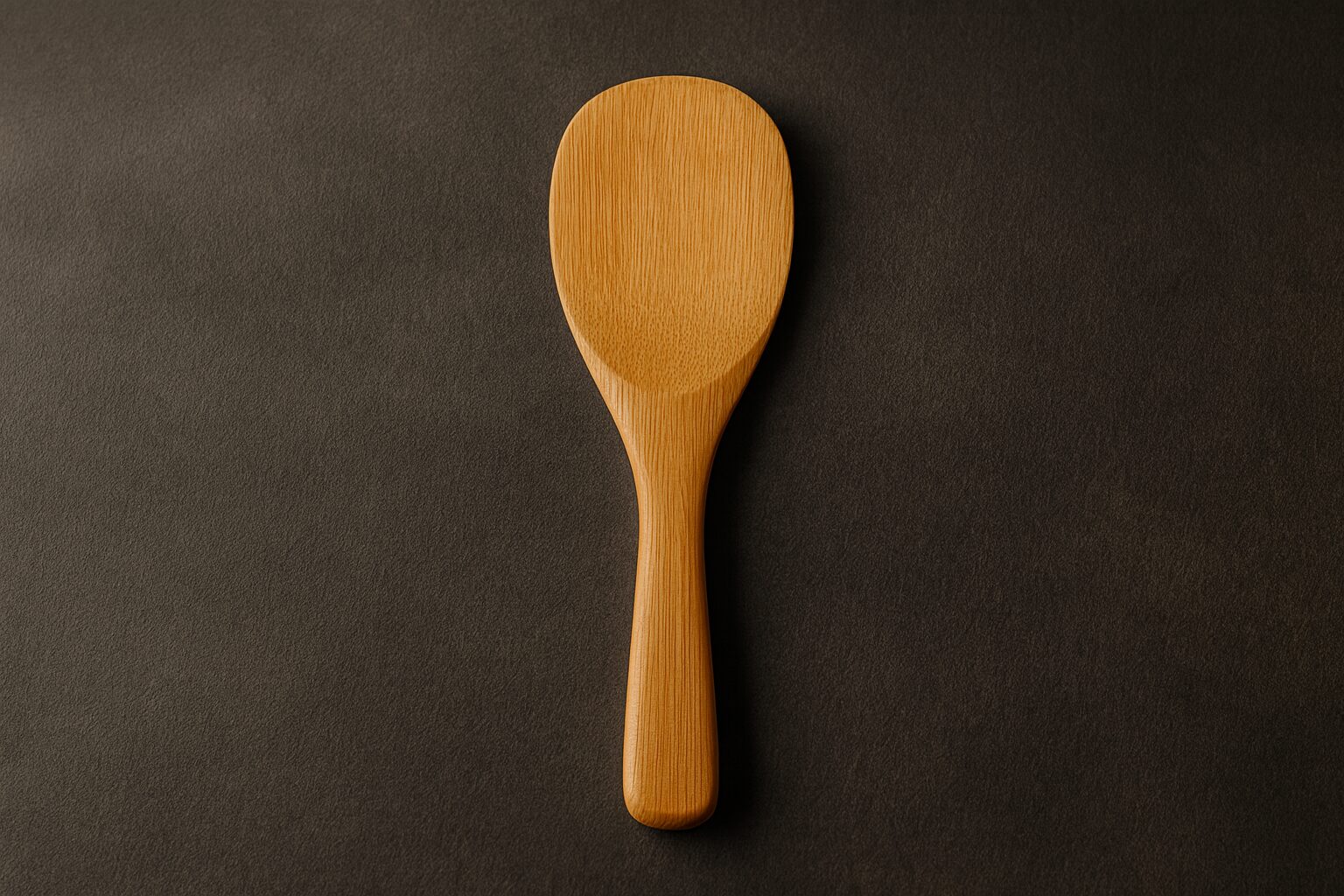By Kokoro Still
After the cooker clicks, steam opens once and thins. I moisten the shamoji and lift rice—not pressing, not scraping, only lifting what has come free. In that small, exact motion, Kokoro is easy to feel.
The shamoji—Japan’s rice paddle—is long associated with Miyajima, where local lore links its lute-like profile to Benzaiten.
The name is commonly traced to nyōbō-kotoba (from shakushi + -moji).
Traditionally carved from wood or bamboo—today also in non-stick resins—its role stays constant: serve cooked rice cleanly, keeping grains intact and the pot unmarred.
The bowl is held low in the hand—one measured scoop, and, if needed, a small second to level.
One Loosening
Lid lifted; steam thins at the opening. Straight strokes in, then a light lift and turn—paths open, heat evens, grains come free.
A Scoop Without Weight
The flat face meets the rice lightly. Lift from near the bottom, slide, then place. No scraping of the pot, no weight on the wrist—only the feel of grains lifting and settling.
The Bowl in the Hand
The bowl stays low in the hand. One measured scoop, a small second to level—no piling, no press. White looks clear; edges stay clean.
The Next Bowl
For the next bowl, the motion repeats—lift, place, a small level at the end. No words follow; the portion is plain to see.
After the Hands
Water over the paddle, a single wipe. Return it upright by the pot, handle forward; the next serve begins without searching.
Quiet Exactness
No ceremony, no talk—just loosening once, then scoops that keep shape. With the shamoji, warmth becomes form; on the quiet surface of the rice, Kokoro is felt—gently.



Comments